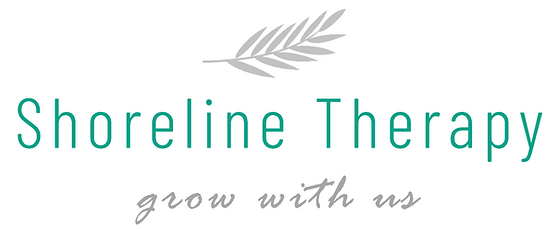
Late Language Emergence and
Early Language Difficulties

Children's communication skills are developing from the moment they are born. During a child's early years there is rapid growth in their expressive, receptive, and social language skills. Although most children will experience typical language acquisition and development, there are some who may require support.
When a child's expressive language skills (vocabulary and word combinations) do not begin to emerge when we would expect, they may be demonstrating late language emergence (commonly termed a 'late talker'). If a child's expressive and/or receptive language skills do not continue to develop as we would expect, they may have what is termed expressive and/or receptive language difficulties (also known as expressive and/or receptive language delay). By age 5 (sometimes earlier), if a child is demonstrating persistent difficulties with language development, they may later be identified as having developmental language disorder (DLD).
When parents express concerns about their young child's language development with others, they sometimes hear, "s/he'll grow out of it," or, "don't worry until s/he's three." Unfortunately, these common misconceptions delay parents from acting on their concerns and seeking a speech-language pathologist's advice.
Late Language Emergence
A child with late language emergence - more commonly known as a ‘late talker’ - is a child who is around 18 to 30 months old and isn’t meeting his or her language production milestones; their expressive language is delayed. These children usually have good understanding of language, and have typical play, social, motor, and cognitive skills otherwise. Their speech sounds may also be developing normally. Professionals such as physicians and early childhood educators who work with young children watch for signs that they may be a late talker. Some of these signs are described below (note: data for vocabulary size provided here are average values; a child may say fewer words and still be within the range considered to be typically developing):
18-20 months
-
typical milestones:
-
by 18 months, says 50 words on average
-
is combining these words into two-word phrases ("want cookie", "daddy shoe", "coat off")
-
-
late talker:
-
says less than 24 words
-
21-24 months
-
typical milestones:
-
by 24 months, says 200-300 words on average (at least 50 words)
-
is combing words into 2- to 3-word utterances ("mummy brush hair", "mummy read book")
-
-
late talker:
-
says less than 40 words
-
24 months: says less than 50 words
-
24-30 months
-
typical milestones:
-
by 30 months, says 450 words on average
-
is putting these words into phrases and short sentences
-
-
late talker:
-
by 30 months says less than 100 words
-
is not using several word combinations
-
The Long Term
Many children (50-70%) who are late talkers do seemingly "catch up" to peers by their early school years (Dale et al., 2003; Paul, 1996). These children score within the average range on standardized tests designed to help identify children with language delays and disorders. However, many score within the range considered 'low performance' compared to their peers. Later on, these children may have difficulty with reading and more complex language including grammar (Rescorla & Dale, 2013).
Other children who are late talkers may eventually be diagnosed with developmental language disorder (DLD) after the age of four. Rice, Taylor, and Zubrick (2008) found that by age 7, 20% of late talkers had been diagnosed with DLD. The strongest predictors of a later diagnosis of DLD are (Fisher, 2017):
-
smaller expressive vocabulary (words the child says)
-
smaller receptive vocabulary (words the child understands)
-
socioeconomic status (parental income, employment, and education levels)
Ask an SLP Series: Early Language Development
Treatment
There are various approaches to providing support depending on the needs of the child and their guardian(s). For some young children who appear to have late language emergence, the SLP may introduce the child's guardian(s) to 'language facilitation strategies' to apply in daily life. These are specific strategies known to help support these children. Follow-up visits consist of checking progress, layering in strategies, advancing the child's goals, monitoring response to intervention, and assessing their progress and development. Some children will benefit from additional direct therapy with the SLP if they require support with more specific language targets (e.g., sentence structure, verb tense, pronoun use, categorization).
Resources
Language Development and Milestones
Early Development of Expressive Language: A Guide for Parents
This chart provides a general guide of the milestones for expressive vocabulary, sentence length, and grammar development. It also provides several red flags to help guide parents to known when to consult with a speech-language pathologist.
"Child Development: Your Child at 24 Months"
MultiCare Health System
Dr. Glenn Tripp, Developmental Pediatrician
https://www.youtube.com/watch?v=Nt4CypX2XPw
"Two Year Old Child Development Stages & Milestones"
Help Me Grow Minnesota
https://www.youtube.com/watch?v=y9Mm85UAWvM&list=PLwPFCsiLex6ulzNYPJ6TzXXZRJB89P4JU&index=1
Late Language Emergence
"Late Language Emergence"
American Speech-Language-Hearing Association
https://www.asha.org/PRPSpecificTopic.aspx?folderid=8589935380§ion=Overview
References on This Page
Bishop, D.V.M., Snowling, M.J., Thompson, P.A., Greenhalgh, T., & CATALISE-2 consortium. (2017). Phase 2 of CATALISE: A multinational and multidisciplinary Delphi consensus study of problems with language development: Terminology. The Journal of Child Psychology and Psychiatry, 58, 1068-1080. doi:10.1111/jcpp.12721
Dale, P.S., Price, T. S., Bishop, D. V., & Plomin, R. (2003). Outcomes of early language delay: Part 1. Predicting persistent and transient language difficulties at 3 and 4 years. Journal of Speech, Language, and Hearing Research, 46, 544-560.
Fisher, E. L. (2017). A systematic review and meta-analysis of predictors of expressive-language outcomes among late talkers. Journal of Speech, Language, and Hearing Research, 60, 2935-2948. https://doi.org/10.1044/2017_JSLHR-L-16-0310
Paul, R. (1996). Clinical implications of the natural history of slow expressive language development. American Journal of Speech-Language Pathology, 5(2), 5-21.
Rescorla, L. A., & Dale, P. S (2013). Late talkers: Language development, interventions, and outcomes. Baltimore, MD: Brookes Publishing.
Rice, M. L., Taylor, C. L., & Zubrick, S. R. (2008). Language outcomes of 7-year-old children with or without a history of late language emergence at 24 months. Journal of Speech, Language, and Hearing Research, 51(2), 394-407.